March 1, 2022.
Today’s class was focused on getting warmed-up for our quiz # 2.
We started class off with a warm-up consisting of determining if the relation is linear or non-linear from a table of values. We looked at the following four examples together. Below are some examples of student thinking.
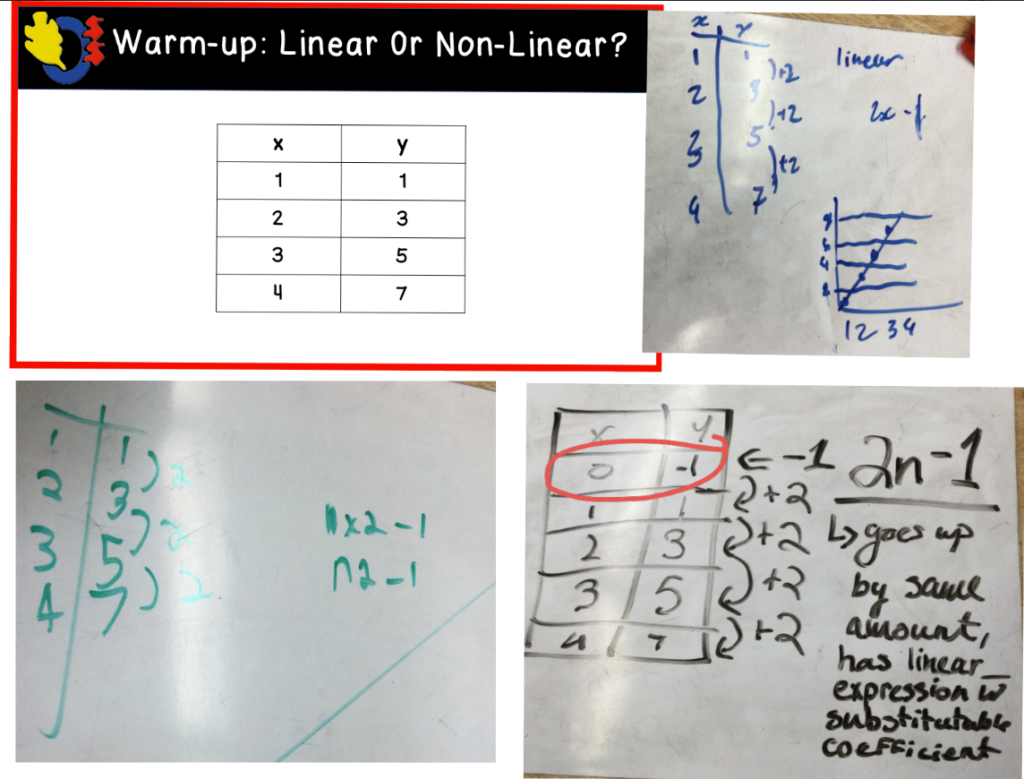
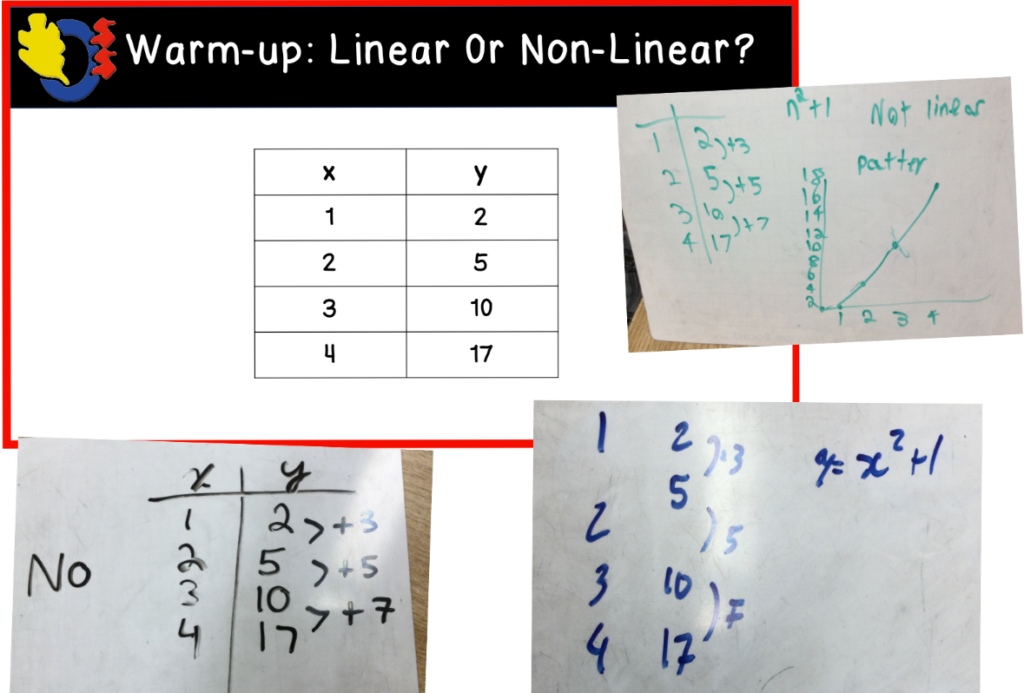
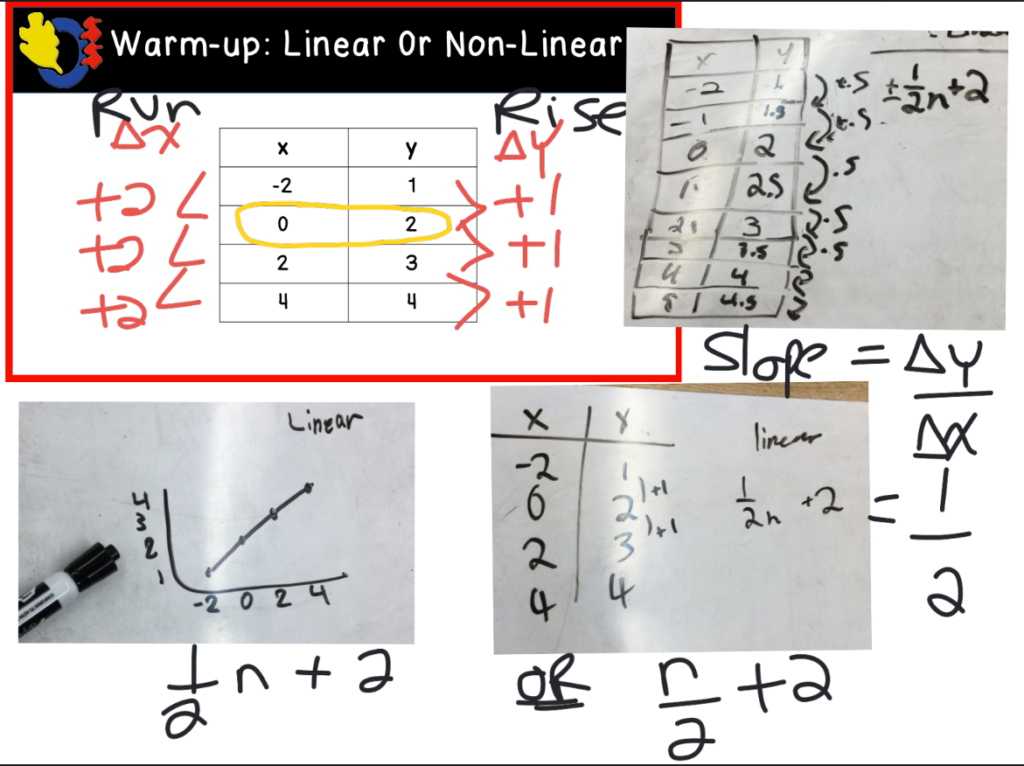
I like to see the variety of explanations here. Some students graphed the relation, some looked at the table and focused on the x and y-differences, and others used words to explain. We talked about a lot of terminology with these examples. We reviewed slope as rise over run and discussed how to interpolate or extrapolate to determine the y-intercept.
I really like the third example because the x-differences go up by a number other than 1. This got us discussing the importance of calculating both x and y-differences.
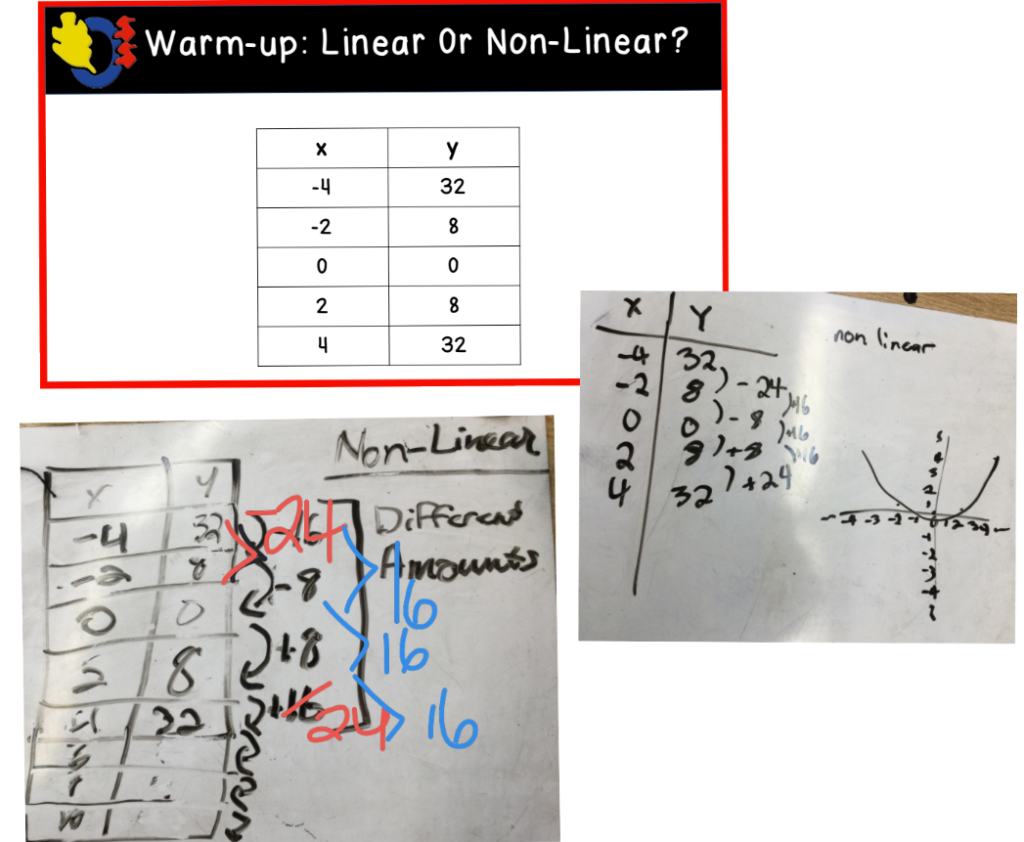
You can see from the fourth student example, that sometimes students would notice a pattern, but have an arithmetic error because they “didn’t do the math” and guessed, making their answer incorrect.
Next, we looked at some multiplying fractions examples. We moved away from the visual model that we used last week and jumped to the algorithm.
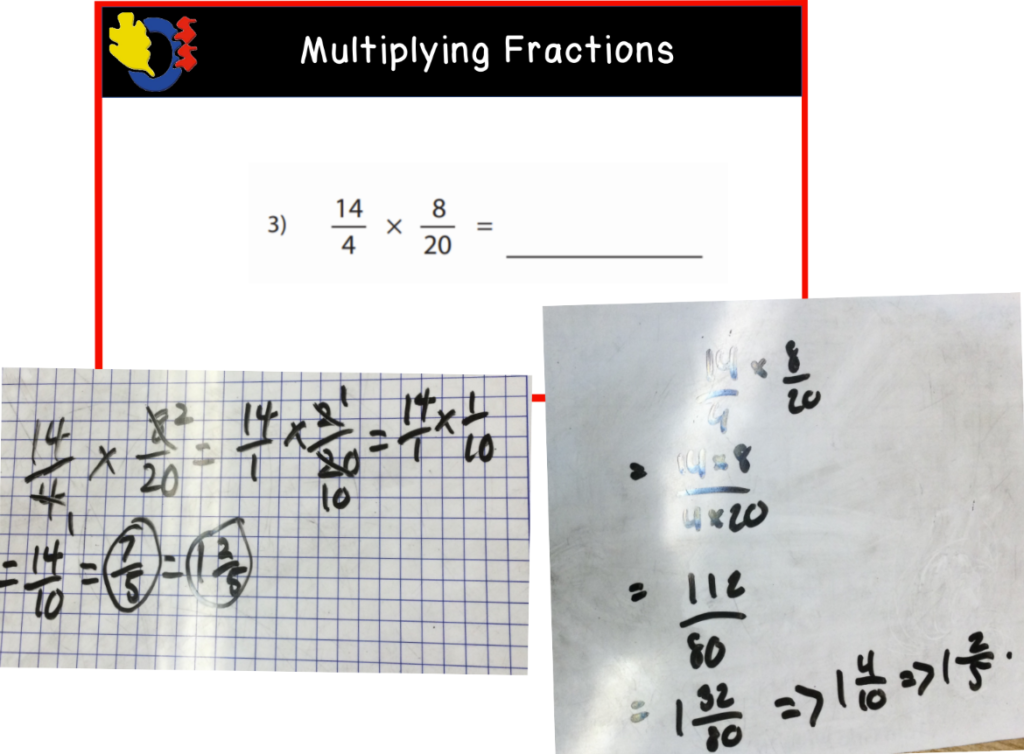
We talked about a couple of different strategies to simply. First, we talked about just multiplying the numerators and then the denominators and reducing the fraction at the end. The second strategy was looking at the diagonals and reducing were possible. For some students this was easy, but others really struggled with this because they didn’t know their math facts well enough and didn’t know the factors. Most recognized if it was an even number they could divide by 2, but they had to use this multiple times to get the greatest common multiple. I reminded students that they could always go back and use the brownie-pan method that we used initially if they needed to.

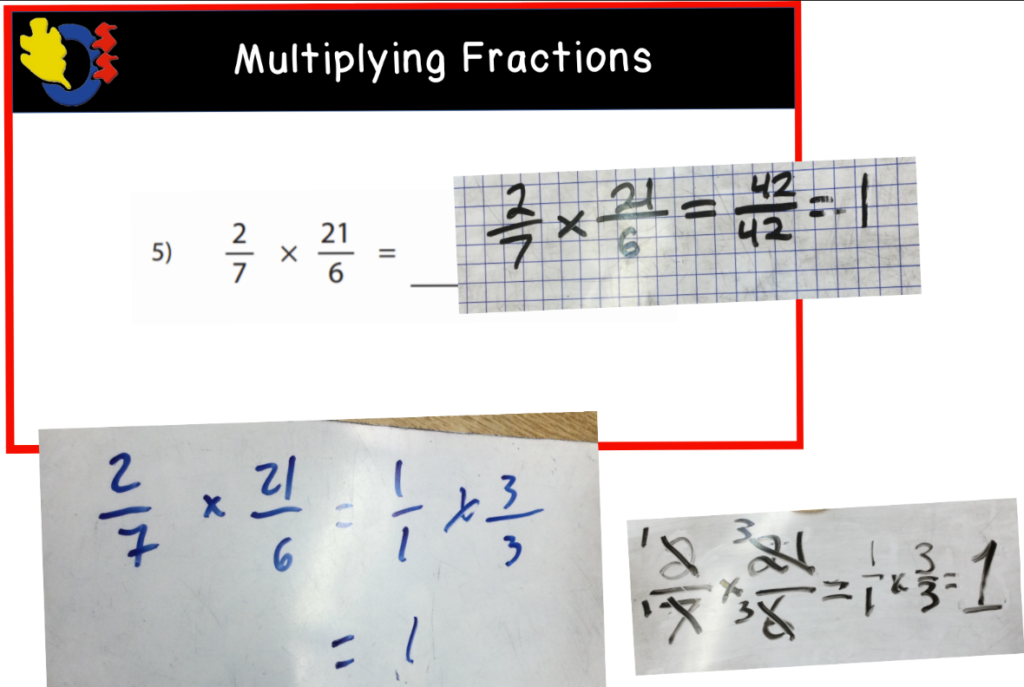

The last topic we reviewed was division. I asked students to model the division problem. The first example was easily divisible, but the second example had a remainder.

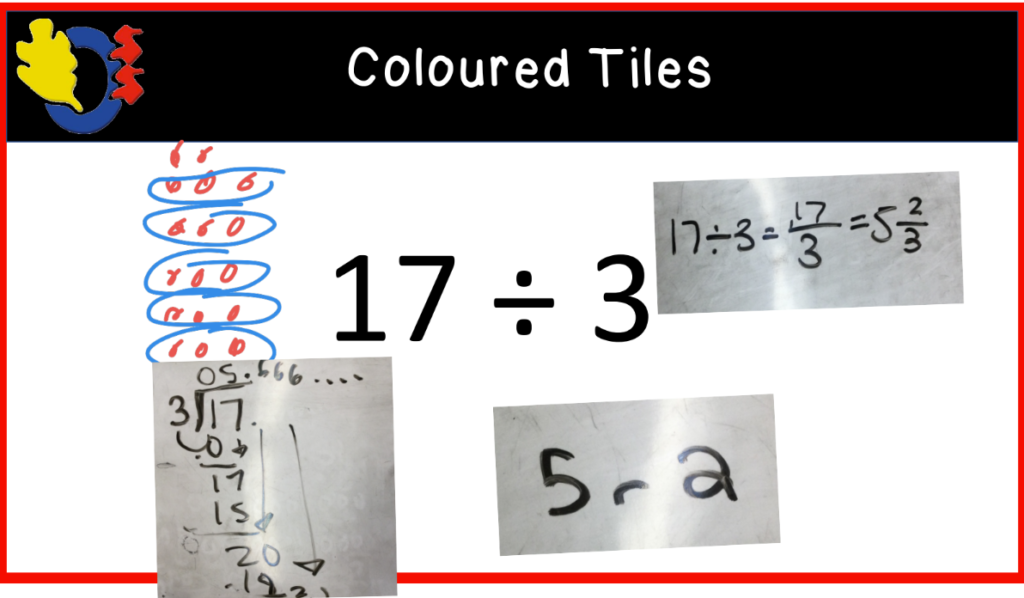
I liked the variety of strategies used in the last division problem. One student used long division, another changed the division problem to an improper fraction and converted it to a mixed fraction and as a class we modeled using colored tiles.

For the last half hour of class, students worked on their quiz # 2.
For the fast finishers, I had them work on the following Boom deck.
That’s all for today.
I hope something here was able to help you on your teaching journey.
Have a fantastic day!